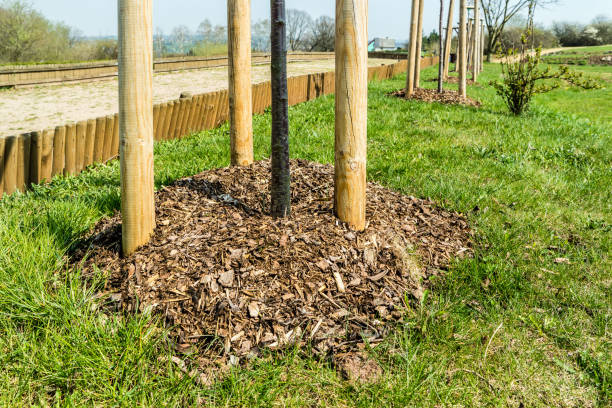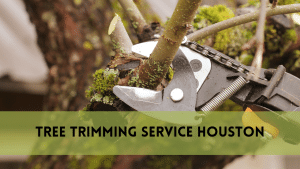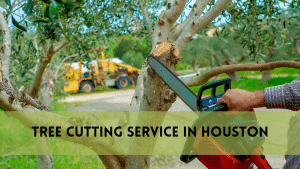Hand removal of a palm tree stump can be a difficult but rewarding task. Palm trees are recognized for having deep and resilient root systems, which can make stump removal a difficult operation. Whether you’re wanting to clear space for a new landscape project or simply want to remove a palm tree stump by hand can be a cost-effective and environmentally responsible alternative. In this guide, we’ll explore the step-by-step process of removing a palm tree stump manually, providing you with the knowledge and techniques needed to tackle this project effectively and safely.
Tools and Materials Required
- A strong, sharp-edged shovel will be your primary digging instrument for excavating around the stump and exposing the root system. For this task, a spade shovel is an excellent choice.
- Mattock or Pickaxe: This tool is extremely effective for breaking through thick roots, loosening compacted soil, and assisting with digging. The mattock end is useful for chopping roots, while the pickaxe end can be used to break up soil and boulders.
- Chainsaw or Pruning Saw: To cut through larger, thicker roots that are difficult to dig out by hand, you will need a chainsaw or pruning saw. Ensure that the saw is sharp and in good working order.
- Gloves: Wear durable work gloves that protect against blisters and splinters. They also provide a better grip on tools.
- Safety goggles: Eye protection is essential to protect your eyes from flying debris, especially while using cutting tools like a saw.
- Wear long pants, a long-sleeved shirt, and steel-toed boots for further protection. These devices offer protection against cuts, scratches, and unintentional impacts.
Steps to Remove a Palm Tree Stump by Hand
Prepare the area: Begin by cleaning the area surrounding the palm tree stump. Remove any garbage, rocks, or other impediments to your job. This will give you more room to work.
Expose the roots
Using the shovel, begin digging around the base of the palm tree stump. Begin a few inches away from the stump and dig a trench around it. Work your way inward, exposing the roots as you go. Make a trench deep enough to access the root system.
Cut and Remove Roots
Once the roots have been exposed, use a pruning saw or chainsaw to cut through them. Begin with the smaller roots and work your way up to the larger ones. Using the shovel or mattock, wiggle or pry the root segments out of the dirt as you cut.
Leverage and Break Roots
For very obstinate or thick roots, use a mattock or pickaxe. These tools can be used to split the roots into smaller, more manageable pieces, making them easier to remove. Using the shovel, lift and separate the roots from the stump.
Continue digging, chopping, and prying roots until you’ve eliminated as much of the root system as feasible. Be patient and meticulous, as this procedure might take time, especially for older and more established palm plants with vast root networks.
Remove the Stump
Once you’ve removed the majority of the roots, you can start digging under the stump itself. Using the shovel and mattock, gradually lift and split the stump. Working around the stump’s base should be done with caution, since it may become unstable during this phase.
After successfully removing the stump, appropriately dispose of it. You can split it into tiny pieces for easy handling and disposal. Some municipalities provide green trash disposal services where you can drop off stump and root debris.
To make sure the stump’s hole is level with the surrounding ground, fill it with soil and compact it. Collect and properly dispose of all removed roots, stump pieces, and trash. A clean and tidy office is not only aesthetically pleasing but also safer.
Final Inspection
Double-check the area for any leftover roots or debris, and make sure it’s safe and ready for usage. Assess the ground for any potential sinking and add more soil as needed to maintain a level surface.
Remember that removing a palm tree stump by hand can be extremely difficult, especially for bigger stumps with extensive root systems. If you run into problems or if the stump is very large, you may consider hiring a professional tree removal service or Renaissance equipment such as a stump grinder for more effective disposal.
Advantages of Removing Palm Tree Stump by Hand
Removing a palm tree stump by hand has various advantages, making it a practical and environmentally friendly option for many homeowners and landscapers.
To begin with, manual removal is less expensive. It removes the need for costly heavy machinery or expert stump removal services, making it an affordable choice for people on a tight budget.
Second, it is an environmentally conscious strategy. Manual removal eliminates the need for chemicals or heavy machinery, lowering the environmental impact. It reduces soil disturbance, which can help prevent soil erosion, and it’s especially suited to individuals who value sustainability.
Third, hand removal enables precision. You may carefully control the procedure, reducing the chance of damage to neighboring plants, trees, or structures. This level of management is especially useful in landscaped areas with delicate or precious plants.
Furthermore, removing a palm tree stump by hand provides a wonderful physical workout, supporting a healthy lifestyle. It provides an opportunity for outdoor recreation and exercise while producing a tangible outcome.
It’s also a learning experience. DIY stump removal by hand allows individuals to obtain practical skills and knowledge about tree anatomy, root systems, and gardening techniques.
Finally, hand removal is appropriate for regions with restricted access or narrow spaces where heavy machinery may not be practicable or possible. Overall, the advantages of removing a palm tree stump by hand make it a cost-effective, environmentally responsible, and satisfying alternative for many homeowners and garden enthusiasts.
FAQS
Can you remove a massive palm tree stump by hand?
Yes, although larger stumps may take more time and effort. When working with large palm tree stumps, patience and tenacity are essential.
Can I use the removed stump and roots for any purpose?
While palm wood isn’t typically used for lumber due to its fibrous nature, you can recycle it as mulch or compost material. However, ensure that it’s disease-free before using it in your garden.
Are there any precautions I should take before manually removing a stump?
Yes, safety is of the utmost importance. Wear safety equipment like gloves, safety goggles, and strong clothing. To avoid mishaps, use sharp tools with caution and maintain firm footing.
How long does it generally take to manually remove a palm tree stump?
The time required varies depending on the size, age, and intricacy of the root system. Smaller stumps may take a day or two to remove, while larger ones may require several days.
When is the ideal time of year to manually remove a palm tree stump?
Late winter or early spring is frequently regarded as the best. The soil is usually moister, which makes digging easier, and the palm tree is less likely to be actively developing.
Conclusion
While physically challenging, removing a palm tree stump by hand provides various benefits. It is cost-effective, environmentally benign, and provides for precise control, lowering the danger of damage to surrounding plants or structures.
The process is also a fantastic physical workout as well as an opportunity to learn about tree anatomy and gardening skills. Hand removal is a sensible and satisfying DIY choice, whether you want to make space for a new project or improve the beauty of your landscape. Just remember to prioritize safety and patience, especially when dealing with larger stumps, and you’ll have a pleasing finish.





